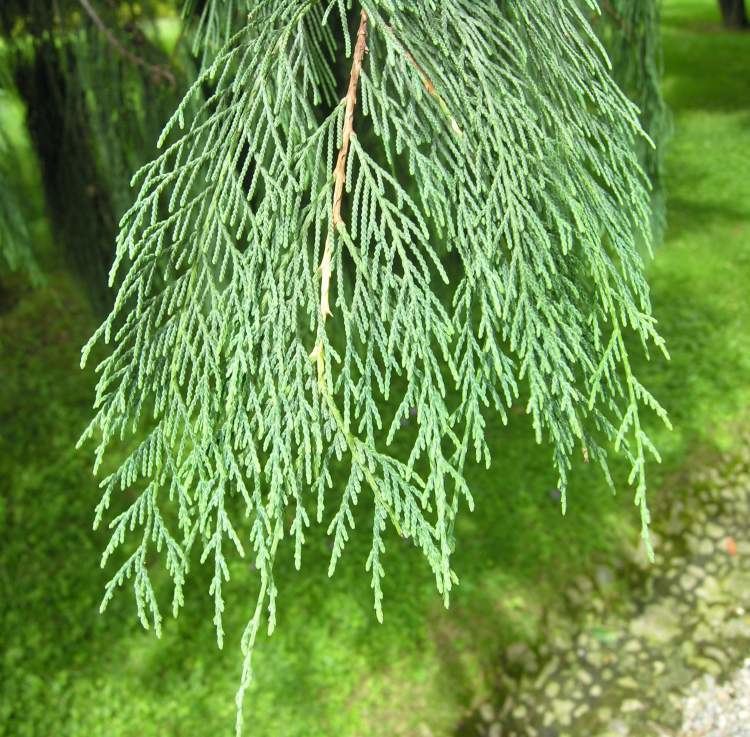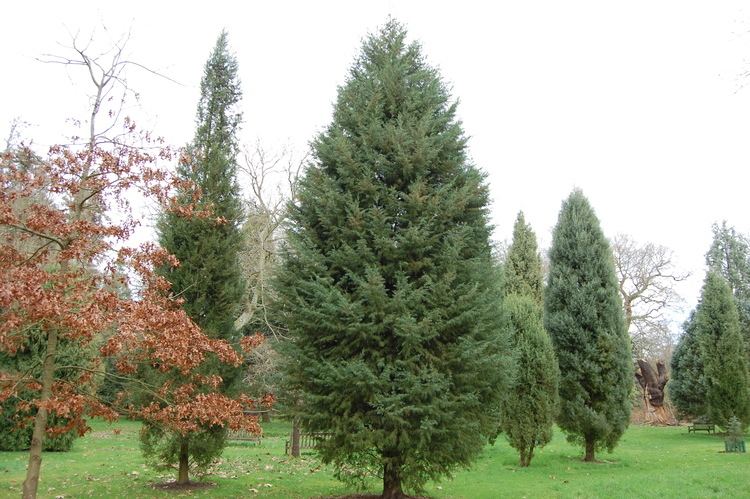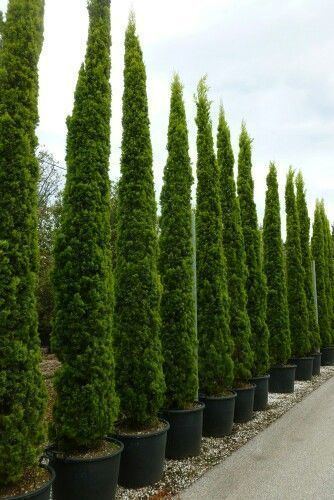Scientific name Cupressus Rank Genus | Division Pinophyta Higher classification Cypress | |
 | ||
Lower classifications Mediterranean cypress, Leyland cypress, Cupressus arizonica, Cupressus macrocarpa, Cupressus nootkatensis | ||
Cupressus goldcrest
The genus Cupressus is one of several genera within the family Cupressaceae that have the common name cypress; for the others, see cypress. It is considered a polyphyletic group. Based on genetic and morphological analysis, the Cupressus genus is found in the Cupressoideae subfamily. The common name comes from Old French cipres and that from Latin cyparissus, which is the latinisation of the Greek κυπάρισσος (kypárissos).
Contents
- Cupressus goldcrest
- Gold rider leyland cypress 30 sec plant of the day cupressus leylandii gold rider
- Species
- Old World species
- New World species
- Allergenic potential
- References

As currently treated, these cypresses are native to scattered localities in mainly warm temperate regions in the Northern Hemisphere, including western North America, Central America, northwest Africa, the Middle East, the Himalayas, southern China and northern Vietnam. As with other conifers, extensive cultivation has led to a wide variety of forms, sizes and colours, that are grown in parks and gardens throughout the world. They are evergreen trees or large shrubs, growing to 5–40 m tall. The leaves are scale-like, 2–6 mm long, arranged in opposite decussate pairs, and persist for three to five years. On young plants up to two years old, the leaves are needle-like and 5–15 mm long. The cones are 8–40 mm long, globose or ovoid with four to 14 scales arranged in opposite decussate pairs; they are mature in 18–24 months from pollination. The seeds are small, 4–7 mm long, with two narrow wings, one along each side of the seed.

Many of the species are adapted to forest fires, holding their seeds for many years in closed cones until the parent trees are killed by a fire; the seeds are then released to colonise the bare, burnt ground. In other species, the cones open at maturity to release the seeds.

Many species are grown as decorative trees in parks and, in Asia, around temples; in some areas, the native distribution is hard to discern due to extensive cultivation. A few species are grown for their timber, which can be very durable. The fast-growing hybrid Leyland cypress, much used in gardens, draws one of its parents from this genus (Monterey cypress C. macrocarpa); the other parent, Nootka cypress, is also sometimes classified in this genus, or else in the separate genus Xanthocyparis, but in the past more usually in Chamaecyparis.

Gold rider leyland cypress 30 sec plant of the day cupressus leylandii gold rider
Species
The number of species recognised within this genus varies sharply, from 16 to 25 or more according to the authority followed, because most populations are small and isolated, and whether they should be accorded specific, subspecific or varietal rank is difficult to ascertain. Current tendencies are to reduce the number of recognised species; when a narrow species concept is adopted, the varieties indented in the list below may also be accepted as distinct species. See also the New World species (below) for a likely split in the genus in the future.
Old World species
The Old World cypresses tend to have cones with more scales (8–14 scales, rarely 6 in C. funebris), each scale with a short broad ridge, not a spike. C. sempervirens is the type species of the genus, defining the name Cupressus.
New World species
The New World cypresses tend to have cones with fewer scales (4-8 scales, rarely more in C. macrocarpa), each scale with an often prominent narrow spike. Recent genetic evidence shows they are less closely related to the Old World cypresses than previously thought, being more closely related to Xanthocyparis and Juniperus than to the rest of Cupressus. These species have very recently been transferred to Callitropsis. New World species are found in marginal habitats with xeric soils, and therefore exhibit a fragmented allopatric pattern of distribution. This type of distribution results in disproportionate local abundance with most species restricted to small neighboring populations.
Allergenic potential
All plants in the genus Cupressus, including New World Cupressus (now Callitropsis), are extremely allergenic, and have an OPALS allergy scale rating of 10. In warm, Mediterranean climates, these plants release large quantities of pollen for approximately seven months each year.
